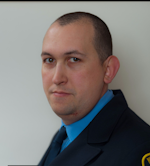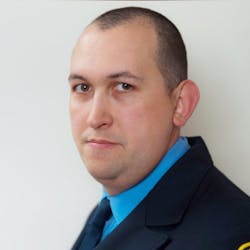Knock, knock, knock. “Hey, cap, got a minute?”
You're halfway through your duty shift, and one of your firefighters asks to speak to you. This situation isn’t an uncommon occurrence; sometimes the conversation is about sports, family or life in general. You are comfortable with those conversations, and we can have them without thinking much about our choice of words or the implications of them. This conversation, however, will be vastly different.
Firefighter: “Hey, cap, I need to talk to you about something.”
Captain: “What’s up?”
Firefighter: “Cap, I’ve been having a hard time with life; lately, it feels like the world is closing in on me, and I can't seem to shake the images in my mind. I’m not sure that I’m going to be able to keep going.”
Captain: “Keep going with what?”
Firefighter: “With life, cap. I want to die. I need your help.”
Many people feel that they will never end up in a situation such as this, and I wish that were the case. But with the rise of mental health-related issues that are plaguing the fire service, if you are a supervisor, you have a substantial likelihood of having to address this conversation or something similar. We are conditioned to want to help, but in most cases are unsure of what to do. The words that you say and the actions that you take can and will impact the outcome. How do we handle difficult conversations? If you’re uncomfortable with the thought of this, good. These conversations often involve intense emotions and high stakes.
What to do
Let’s think about what’s happening in the captain's mind, as well as the physiological impacts. The hairs on the back of his neck have stood up. The sympathetic nervous system activates the adrenal glands and dumps adrenaline (epinephrine) into his blood, his heart rate increases, his respiratory rate increases, his pupils dilate to allow more light in, and digestion stops. Most of us understand the fight-or-flight process, but what is interesting is that our brain is preparing to physically fight or run away, not to have a difficult conversation that requires more intellectual capacity. You have very little time to formulate a plan, as this conversation came up out of the blue. So, what do you do?
One of the first things that we can do is to visualize the positive outcome. Once you can see the positive result, share it with the other party. In this case, the positive outcome is to get your firefighter the support that they need to deal with the issues that are causing them distress. Starting with something like, “I'm going to get you whatever help you need, and I want to help you. Let’s discuss what’s on your mind and how I can help.”
The next idea is to establish a dialogue. Dialogue is merely an exchange of ideas or opinions. In effect, it offers both parties a way to get vital information out into the open and available for consideration. Here is where the practice of active listening is essential. As Stephen Covey points out, “Most people do not listen with the intent to understand; they listen with the intent to reply.” We are conditioned that silence is a negative thing in most conversations, and when we are engaging in a dialogue, we must always think about what our response is going to be while the other party is speaking. By utilizing active listening, we can remain more engaged in the conversation. Maintaining eye contact and not interrupting will go a long way toward establishing the dialogue.
Ensuring the safety of the person is a primary concern, both their physical security and their emotional/psychological safety. It took tremendous strength to walk through your door and ask for help, so ensure that they feel safe. The content of the dialogue will not be forthcoming if the safety concerns are not met. Following are a few suggestions to allow for safety in the discussion.
Use “I” statements: We have likely had or been involved in conversations that go like this: “You are always late to shift; you never relieve your person on time.” It is easy to get defensive when this is how we are being addressed. What if the conversation went something like this: “I noticed that you have been late the last three shifts and have not been able to relieve your person on time. Is there something that we can do to help you?” This change of tone and word choice allows the recipient to feel as though you are willing to work with them and to address the problem. A shift in this conversation will let you separate the behavior from the person and allows the recipient to be more open and receptive to the dialogue as it will be viewed less as a personal attack.
Be mindful of tone: Albert Mehrabian is credited with identifying the percentage breakdown of human communication. He found that only 7 percent of the message is the spoken/written word. Have you ever misinterpreted a text message? This rule is likely why. It comes down to the fact that 38 percent of the message is the tone that we use. The final 55 percent is the body language that we project. This rule is important to note because if our body language is not congruent with the tone and word choices, our message will be lost. If someone is glaring at you, with their arms folded across their chest, but telling you they want to help you, what do you believe?
Be positive: We should make an effort to end all of these interactions on a positive note. The conclusion of the conversation doesn't mean that all of the discussed issues are resolved, but that you have agreed to the next steps in our action plan. Expressing gratitude at the end of your conversation may be appropriate. “Thank you for coming to me with your issues and trusting me to help you” could be a potential solution to show the other person that you not only care about them but appreciate that they came to ask for help.
Here to help
Difficult conversations come in many forms including mental health, supervision/training issues, discipline, etc. Understanding a basic format on how to address a wide variety of these conversations is a fundamental need for all firefighters, as rank does not predict whether someone will come to you for help when they most need it.

David Wiklanski
David Wiklanski is a firefighter/EMT with the New Brunswick, NJ, Fire Department, currently assigned to the suppression section. He is a speaker and writer, known for his presentations on behavioral health. His mission is to end the stigma associated with mental health and to connect responders with the available resources to not only survive, but thrive in their careers. Wiklanski has a bachelor’s degree in psychology and a master’s degree in behavioral sciences-human behavior and organizational psychology from Kean University. He is on faculty at Kean University and Raritan Valley Community College, where he regularly lectures on all aspects of psychology. Wiklanski is a fire Instructor II/EMT instructor and an NFFF advocate.






